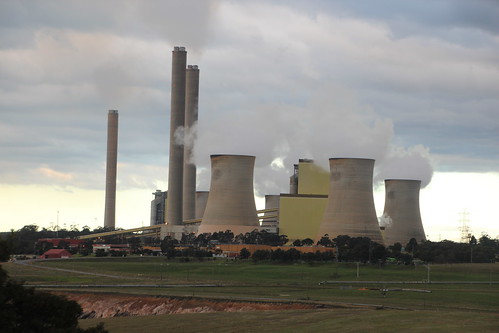Mass power outage puts spotlight on sturdiness of transmission towers
Loy Yang #LoyYang

Grattan Institute climate change and energy program director Tony Wood said increasing wild weather, including heatwaves, is exacerbating the stress on transmission lines and governments should ask if their design or construction could be bolstered.
“When people see the photographs in the media of what happened to the transmission towers … the first thing they will say is that it looks exactly like what happened to the transmission towers in South Australia eight years ago,” Wood said.
“We have to do something about improving their situational resilience and ask why did this particular storm bring down those particular transmission towers when the same thing happened in South Australia?
“Is there something about the particular towers themselves, the age of those towers or the way they were built, or is there something particular about that storm that came through in an unusual way?”
The energy regulator permits energy companies to undertake ongoing maintenance to keep power lines maintained to standards and to recoup the costs from energy users through network charges.
University of NSW energy expert Dylan McConnell says Australia needs to think of ways to weatherproof power supply.
“The consensus is that in a hotter world we will have more storms and downpours. In that world, do we have to weatherproof transmission lines or start thinking about having a more localised resources rather than transmitting them large distances,” McConnell said.
Victorian Energy Minister Lily D’Ambrosio said on Wednesday she had told her state and federal counterparts there was a need to boost the grid’s climate change resilience because “transmission lines don’t stop at the borders”.
The Albanese government is rolling out the $20 billion Rewiring the Nation program, which offers cheap loans to companies building transmission lines needed to link new wind and solar farms to the grid.
Climate Change and Energy Minister Chris Bowen said expanding the transmission network would make the nation’s electricity supply more resilient as the climate changes.
“We’re experiencing more frequent and more severe extreme weather events due to the changing climate. This shows how critical a resilient and modern grid is to give network operators multiple options for rapidly diverting electricity around different parts of the grid and between states as needed,” Bowen said.
“The storm caused the collapse of several power lines, which in turn caused a coal-fired power station to temporarily go offline – with the vast majority of outages due to storm damage to poles and wires at the local distribution level.”
Loading
Federal opposition spokesman on climate change and energy Ted O’Brien criticised Labor’s “blinkered renewables only” approach to rebuilding the grid, saying Australia needed an “electricity system resilient to the weather, not reliant on it”.
Green Energy Markets Director Tristan Edis highlighted that household batteries could help address failures across all sections of the power supply system.
“A home battery, particularly one that can be called upon to export power to the grid via internet controls, can help support the overall power system in the event of a large power station or transmission link failure.
“At the same time home batteries can help individual households keep the lights on during the far more numerous outages caused by localised distribution network failures which are responsible for over 90 per cent of power outages”.